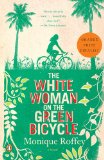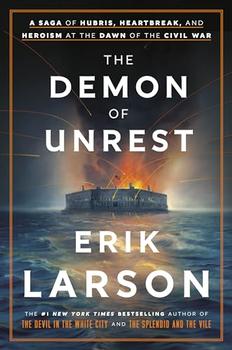Summary | Excerpt | Reading Guide | Reviews | Beyond the Book | Read-Alikes | Genres & Themes | Author Bio

 Book Reviewed by:
Book Reviewed by:
Marnie Colton
Buy This Book
This article relates to The White Woman on the Green Bicycle
In 1956, Americans were getting their first taste of Trinidad's unique contribution to music in the form of Harry Belafonte's infectious crossover hit, "The Banana Boat Song (Day-O)." A brief fervor for all things calypso followed, resulting in such nutty fare as tough guy actor Robert Mitchum's album, Calypso - Is Like So... (1957), and kitschy B movie Bop Girl Goes Calypso (1957). Although Belafonte may have been known as the King of Calypso in the United States (a claim to fame never made for Mitchum), Trinidadians revered serious performers like Lord Kitchener, Sir Lancelot, and the Mighty Sparrow, and for them, calypso symbolized much more than barbecue background music.
The roots of calypso are believed to date back to the 16th and 17th centuries, when West African slaves introduced gayup - a kind of call and response music led by a chantwell - to the Caribbean. These songs endured through centuries of colonization by the Spanish, French, and British, and, after slavery was abolished in the mid-19th century, were incorporated into the music of the European Lenten celebration known as Carnival.
Combining the festive costumes and parades of the French plantation owners with an African call and response song structure and steel percussion instruments, Trinidadians thus created the first calypsos; these often took the form of musical competitions with invigorating boasts and chants that hailed the victorious while heaping derision on the defeated.
Calypso quickly evolved into a medium for socially conscious messages, leading to such hits as "Rum and Coca Cola" (1943) by Lord Invader, an attack on the loose morals indulged in by American soldiers and their local paramours, and the Mighty Sparrow's "Jean and Dinah" (1956), which addressed the struggles of prostitutes deprived of their livelihood after the exodus of American military bases from Trinidad.
More recently, calypso has sprouted such offshoots as soca (a fast-paced, percussion-heavy, electronic music born in the 1970s that captures a more rock and disco oriented audience), and rapso (a hybrid of calypso and spoken word poetry that reflects the Black Power movement of the '70s and '80s), which is often associated with musician Brother Resistance (see video below).
In The White Woman on the Green Bicycle, a novel that often blends fact and fiction, the Mighty Sparrow makes an appearance, discussing his illustrious career with George. Initially a supporter of Williams, Sparrow grew disillusioned with the island's leader and recorded a dismissal called "Get to Hell Outta Here" in 1965 (both in reality and in the novel). Won over by this charismatic and forthright people's hero, George realizes that Sparrow is "a performer through and through, a persuader with devastating charm, a man of love." These same qualities could describe calypso equally well, as this music informs, convinces, and romances its listeners.
![]() This article relates to The White Woman on the Green Bicycle.
It first ran in the May 12, 2011
issue of BookBrowse Recommends.
This article relates to The White Woman on the Green Bicycle.
It first ran in the May 12, 2011
issue of BookBrowse Recommends.




I write to add to the beauty that now belongs to me
Click Here to find out who said this, as well as discovering other famous literary quotes!
Your guide toexceptional books
BookBrowse seeks out and recommends the best in contemporary fiction and nonfiction—books that not only engage and entertain but also deepen our understanding of ourselves and the world around us.